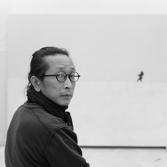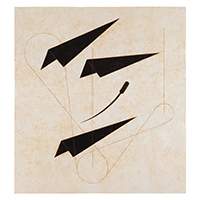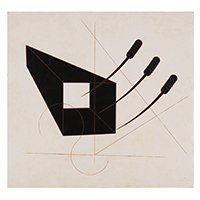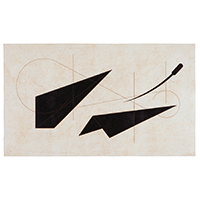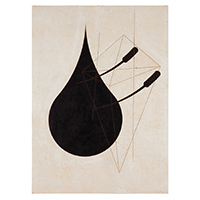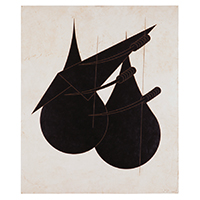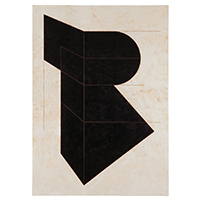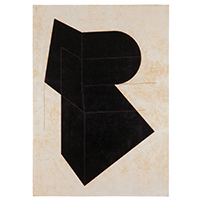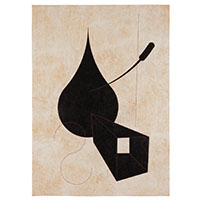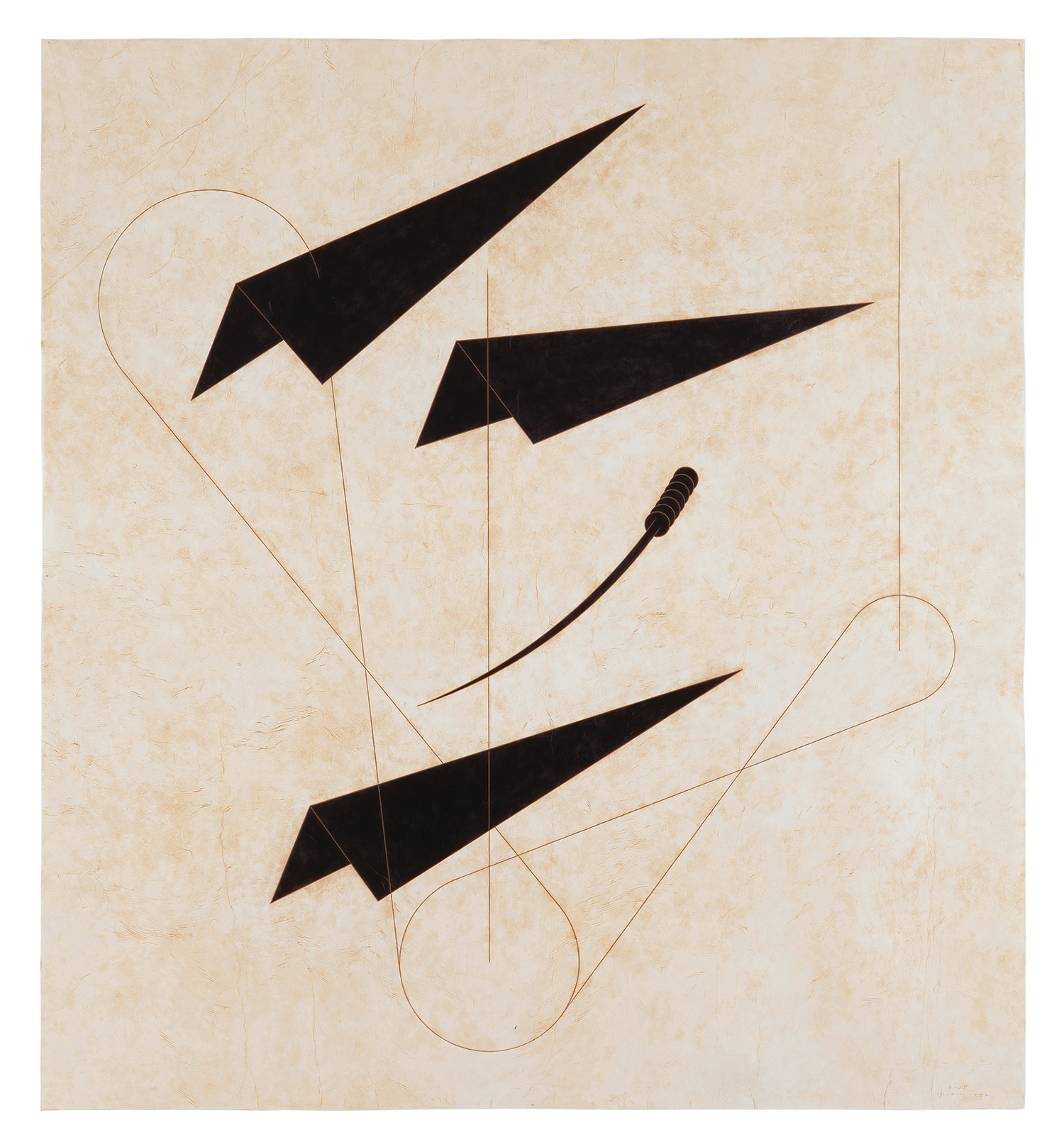
Looking at a red wall from the forest of tears
Yang,Dae-Won
incorporates the features of people’s way of living in the world with his unique round man
figures(called Dongulin) and an intense primary color contrast in the manner of
simplicity and symbolism. In this exhibition all of the works, which he created over
the last two year, have red. Different from the composition of the characters presented in
previous solo exhibitions, in this exhibition his composition format also
changed from his earlier style, which was omniscient and
contemplative. Such omnipotent perspective has transformed into an
overwhelming composition: now the large canvases are filled with human faces
overwhelming the audience. Above all other changes, Dongulin, who used to
wear a mask and military uniforms, a symbol of power and authority, hiding his
true intention and keeping a bright lookout on strangers, is described as a
teary figure. What brought all these changes to the artist’s twelfth solo
exhibition? What does it mean to the artist?
Isolation from the world, going out to the world, quest for the world and
speculation about the world
Yang has been suggesting very personal and implicit exhibition themes with
brief words since his solo exhibition in 1995. The following are
the exhibition titles: 《Island
I》(1995), 《Island II》(1998), 《Excursion》(2000),
《Addiction》(2001),《Nan I》(2002)(‘Nan’has multiple meanings as orchid, subject I, a disturbance and adjective form of flying), 《Nan II》(2003), 《Blue
Island》(2006), and 《Doubt》(2008). The reason I am bringing up this brief story of his past
exhibitions at this point is because I believe that it can suggest a crucial
clue for reading this exhibition theme better. Plus when his unique drawing
methods such as using ironing and mixed media coloring techniques have always
been discussed by many people, the stories behind the images have been
relatively overlooked, so by discussing it here, I think that we can finally
put away such inconvenience caused by such one sided reading of his work.
To him, ‘painting’ is like a mirror reflecting a long journey of his search for his
identity in the world. In 《Island》, a solo exhibition about his own studio, he considered himself an
island isolated from the outside world, and depicted the isolated circumstances
of the island. Further, he made his own very personal interpretation about the
world on the canvas. This is indeed a very important starting point for the
beginning of objective introspection, more precisely the current situation of
the art world. And also, in the following solo exhibition, 《Excursion》, he brought his isolation from
the world to a stop and departed from the outside world. He finally began to
search for a communication. This exhibition brought a change not only to the
thematic approach but also in the formative aspect in his work. For instance, breaking
from the ironing technique, which has drawn lots of attention from the
audience, here he discovered a unique coloring technique that strengthened
solidity and density in the picture. In his works around this time period, the
images of the isolated island disappear. Instead there appear some images
coming out of a gap between two spaces or icons that are inspired by newborn
babies who just saw the light of the world for the first time in his pictures.
All of these images imply his choice to come out to the world.
From the isolation from the world to the outing for communication, he finally
begins his search of the world. His past solo exhibitions including《Addiction》, 《Nan》, 《Blue Island》 stay
in line with this process. The world the artist observed, after his time of
isolation is one where people are poisoned by their obsessive or addictive
relations to one another. At first, under the theme of addiction, the artist
suggested the process of his study of delicate relationships of feelings between people such as love, disbelief and
revenge from a neutral stance. Furthermore, as a part of the process of his
study of psychological states in a more objective and universalcircumstances,
he depicted scenes of a large number of anonymous crowds in《Nan》. And in
that way,《Blue Island》is like a
phase of the conclusion of his view of the world.
In other words, the world he has
silently observed for a long time is
described like a poison (the color blue is meant to signify poison). His works
in this period employ a broad perspective, utilizing images from various motifs
including athletic meets, the ocean, and masterpiece paintings. When looking at
the works in this period, the world represented by Yang at least does not look so easily manageable. From an athletic meeting
filled with competitiveness or surging the blue ocean that seems like it is
swallowing up everything to all different kinds of human alliance spontaneously
constructed by power or the death of an individual forgotten by people’s apathy, Yang conveyed images of the
world from a certain distance. And by that deepening process of themes, the《Doubt》series was born.
Drawing
speculation at the end of the quest
Doubt. What Yang, Dae-Won chose after his search for the world was indeed a
doubt about the world. Escaping from passive stance, he started to embrace the
world as an individual responding to various circumstances and to actively
speculate on it. In this way, the《Doubt》series reflects a form of speculation.
Then what is the question of the artist who reached a conclusion in《Blue Island》that the world is like poison?
In such a world, according to his understanding of it, he throws questions such
as “How have I been living?”, “Are the images of the people around me and myself true?”, “Are the circumstances and things around
me also true?”, and begins to speculate about the world
through his pictures.
In fact, doubt appeared even in his earlier works as a fundamental part of
their conceptual foundations. From the process of searching for his own
identity as an artist to the process of his recent examination of
society that he is currently engaged in, after all his doubt toward society and
the world around him seem to be there. Nevertheless, I would say that this
speculative process depicts a real portrait in time by following the pattern of
thesis-antithesis-synthesis through the phases of seeking to know the self,
then the society and finally entering a phase to question the position of the
self in society.
Situations with
doubts
With such a context as a background, Yang gropes
for conversion in his perspectives, from broad perspectives to microscopic
perspectives, in order to incorporate his thoughts about the world as an
individual in the society. And here a doubt works as a concrete condition to
find out about human’s inborn
psychology and attribute by narrowing the distance to the world. Most of
doubtful situations he describes are made in the relationships with a lot of
people in the society. Such diverse human relationships create systems of
social structure such as customs, ethics and rules to sustain the
relationships, and that becomes an interest of a doubt. For instance, in《Doubt-Tears Ⅷ(Approval) 205080》, there are people lining up at a presidential election vote, and amongst
the crowd in ‘○’ shape line that implies the group’s approval of the candidate, one round man is turning his head
toward back crying. This man is depicted as his alter ego: it is an expression
of a situation reflecting the subtle human psychology that one imperatively
responds to the situation hiding his own thoughts.
In the meantime, for expressing situations with doubts, blue and red walls that
construct a major pivot for a space division of the pictures are chosen as
common motifs in this exhibition. This is a symbolism of a social system in
disguise of perfection, common ideas required by society in the very
fundamental form. In《Doubt-Red Wall Ⅰ 715080》, a work that borrowed the structure
of Leonardo DaVinci’s , Dongulin, an anonymous
individual and at the same time a figure signifying the artist himself, is
es+caping a high and solid red wall made of systems and gazes enforced by the
society.
However, the look of the escaping figure is depicted as a figure that is still
not able to thoroughly turn away from the social systems and common ideas. It
is an image of an individual who attempted an escape from society but at the
same time is afraid of total isolation from it, plus fear of a situation that
might turn him back to the society someday: it is an image of a person who
cannot be totally free from society. 《Doubt-Red Wall Ⅱ 425080》implicates a fix of a man in agony
hanging a barrier in red wall. By choosing a vertical composition, the artist
is describing a psychology of a human who is in an imminent situation of
tension.
An interesting thing is because such a system is also created by
humans, the interest of doubt after all becomes an individual from the
society, and that creates a situation to doubt each other, furthermore family
members and eventually it becomes a situation where one doubts himself. This
kind of content is represented in 《Doubt-Family 620170》, where he painted the
symbols of himself and his wife and son. And in 《Doubt-Red
Wall Ⅱ 016080》, we can find a
self portrait of Yang depicting a situation of doubting himself.
Another motif appears in this exhibition is a forest image that reminds of Sansevieria
leaves. The artist says that the system society requires has become too solid,
most people forget about the value and purpose of life and are facing a
difficult situation that restrains them from realizing their purposes and
beliefs. Here the forest becomes an important place as a hideaway as seen in 《Doubt-ForestⅠ038070》.
Dangling hid himself in the forest in order to get away from a society that
faces a crisis of truth, and that speaks of a psychological state called doubt.
If the island that he made a work with is a motif of his studio it he himself
and has a connotation as a very isolated personal space, the forest seems to
signify a psychological resting place where he can barely become confident with
while still running away from irregularities, a mask that he wears to hide his
real feelings. In a way, it is a self-justification.
Metaphors of doubt
Not only from ‘Situations with Doubts’, can we find lots of other connotations of doubt in his pictures.
At first, a tear is the most intensive way of emotional expression to show a
form of doubt. And here the tears are represented as teary eyes than falling
tears on cheeks. This delivers the meaning of sadness much more firmly in a
sense. In the past, Yang expressed tears with cotton threads on the canvas, and
now that became a unique formative expression in round shapes of Yang’s art. Yet, the teary eyes don’t just
indicate the doubtful state of the characters. It is rather a metaphorical
expression about people’s attributes, which he found
through doubt. Sometimes there are times when we compromise with society,
although we know that the exterior of society is actually false. That is what
the artist is trying to portray: the image of a human who has to turn his head
and swallow his tears while hiding his real mind. When the previous images were
just wearing masks in order to hide their minds, here the images are
represented with teary eyes in masks, which in the end fortify our curiosity
about the inner psychological state of the person behind the mask. In addition
to that, his figures are displayed as close-up images, which show the artist’s active intention to speculate the world in details. As if it was
taken with zoom-in function of a camera, the doubting figure’s face is filled up in the picture. To speculate about the hidden
truth, grasping the emotions of the characters became very crucial, and for
that reason, probably close-up composition must have been chosen. 《Doubt-Tears Ⅴ 312080》, 《Doubt-Tears Ⅵ 222080》, 《Doubt-Tears Ⅶ 013080》are the examples that
display such an intention of the artist. On top of that, the special expression
that he appropriated from the compositions of masterpiece paintings in his last
solo exhibition became much stronger. In 《Blue Last
Supper(Doubt) 135060》, the artist applied linear perspectives. And
the maximized special sense produced the situation in the picture, and by doing
so he could achieve a special depth in the work. When previous pictures were
focused on the depiction of the figures and composition of colors just like an
architectural floor plan, this kind of attempt becomes a strengthening factor for the conveyance of them as
well as the expansion of the space inside the picture. Moreover, although
it is quite subtle, these works
take an important role in bringing
a change to the simple composition method of Yang.
In that sense, 《Doubt-Tears Ⅶ(Blue Wall) 623080》shows a dramatic tension
by suggesting a diagonal
blue wall with a figure facing back to back, and
this kind of tension culminated in《Doubt-Red Wall Ⅴ 036080》. In the picture, the dandelions are hiding or running around while still not letting down their own guard. Such a scene is
composed in a manner of linear perspectives: the bold expression
of the distance between the front and the back figures draws the
impending state inside the picture
to the fullest.
Lastly we can see
that all the exhibited works have red backgrounds, and with this they render
very strong contrast in color combination. This gives salience to the figures
in the works, and gives theatricality to the actions of the figures. And when
considering that from the formal and thematic aspects, it distinguished his
current styles from that of the past. It also supports the artist’s intention to contemplate about the
world more actively, and moreover maintains the unity of the exhibition theme.
In this way, Yang
tried to incorporate an image of a human attribute that he has to compromise
with a poison like world, which lacks its truth. Here he depicted it as a doubt
in four different forms such as ‘Doubt-tears’,‘Doubt-forest’, ‘Doubt-blue wall’, ‘Doubt-red
wall’. The artist has been working so hard to transfer
his themes to the audience through his genuine paintings. In other words, he
has been focusing to make artworks that are closely related to his themes and
formats. As a person who has witnessed the changes in his works, it seems as
though he finally acquired a freedom of formative expression suited to his
theme by pushing himself in painting and deepening his thematic approaches.
That is probably why I get more interested in the themes that he will be
dealing with next time, rather than the meaning of Dongulin, cautious
composition, density of the surface of the pictures, which are more popularly
discussing aspects about his works so far.
The distinguished difference between Yang and other artists of his time can be
found in the fact that his works form a clear identity with a pertinent
combination of all the factors of paintings such as theme, composition and
techniques. There are three points that support it: First, the artist’s existential aspect influenced the theme of a work on the society,
which enables the psychological and sociological consideration about the work,
and secondly by creating a figure with strong personality called Dongulin
(round man), his work has formality, maintaining the simple and symbolic
expression of abstract painting, and at last, he accomplished a unique
technique based on his understanding of materials while maintaining the two
dimensional aspect of painting. Such aspects continue to a merit that they enable
multi perspective readings about the work. That is to say that Yang, Dae-Won’s painting gives a pleasure of reading about contemporary art.
Certainly his painting is far from those who just fell into mannerism and
become technical paintings, or those who just mimics certain countries’ art trend without any sense of sovereignty, and in this way, his
work should be seen as very distinct from the problematic tendencies in recent
painting.
After accomplishing his own firm artistic language through thorough endurance,
he now acquired contemplative space to convey stories about the times. Indeed,
true contemporary art that contains the spirit of the times can be born when
the artist reflects his perspectives on the current of time and puts it into
his work in formative method and define it. If you can agree with the
definition of the artist as a person who silently goes with the changes of
time, and naturally incorporates the images of the world as seen in the layers
of his own experiences, Yang, Dae-Won is probably one of the most hardworking
and sincere artists.
Once he mentioned that someday he would like to make a book with his work about
the themes that he has been dealing with his solo exhibitions. When the book is
about to be finished, we might be able to see the images of the world that
reflects the full spectrum of the artist’s life. Wouldn’t the result be just
something that reflects the artist’s identity and
existence?
In the end, the theme of ‘Doubt’ doesn’t’t look as though it is going to
leave the artist’s mind for a while, because the world
that he will continue to live with in silent tears will remain far
from him.
Hwang, Jung-In (independent Curator)






